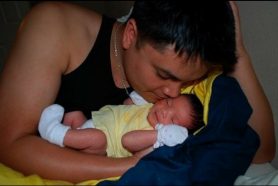- Diseases
- Acoustic Neuroma (16)
- Adrenal Gland Tumor (24)
- Anal Cancer (70)
- Anemia (2)
- Appendix Cancer (18)
- Bile Duct Cancer (26)
- Bladder Cancer (74)
- Brain Metastases (28)
- Brain Tumor (234)
- Breast Cancer (726)
- Breast Implant-Associated Anaplastic Large Cell Lymphoma (2)
- Cancer of Unknown Primary (4)
- Carcinoid Tumor (8)
- Cervical Cancer (164)
- Colon Cancer (168)
- Colorectal Cancer (118)
- Endocrine Tumor (4)
- Esophageal Cancer (44)
- Eye Cancer (36)
- Fallopian Tube Cancer (8)
- Germ Cell Tumor (4)
- Gestational Trophoblastic Disease (2)
- Head and Neck Cancer (14)
- Kidney Cancer (130)
- Leukemia (342)
- Liver Cancer (50)
- Lung Cancer (286)
- Lymphoma (278)
- Mesothelioma (14)
- Metastasis (30)
- Multiple Myeloma (100)
- Myelodysplastic Syndrome (60)
- Myeloproliferative Neoplasm (6)
- Neuroendocrine Tumors (16)
- Oral Cancer (102)
- Ovarian Cancer (178)
- Pancreatic Cancer (160)
- Parathyroid Disease (2)
- Penile Cancer (14)
- Pituitary Tumor (6)
- Prostate Cancer (150)
- Rectal Cancer (58)
- Renal Medullary Carcinoma (6)
- Salivary Gland Cancer (14)
- Sarcoma (238)
- Skin Cancer (300)
- Skull Base Tumors (56)
- Spinal Tumor (12)
- Stomach Cancer (66)
- Testicular Cancer (28)
- Throat Cancer (92)
- Thymoma (6)
- Thyroid Cancer (100)
- Tonsil Cancer (30)
- Uterine Cancer (86)
- Vaginal Cancer (18)
- Vulvar Cancer (22)
- Cancer Topic
- Adolescent and Young Adult Cancer Issues (22)
- Advance Care Planning (12)
- Biostatistics (2)
- Blood Donation (18)
- Bone Health (8)
- COVID-19 (360)
- Cancer Recurrence (120)
- Childhood Cancer Issues (120)
- Clinical Trials (628)
- Complementary Integrative Medicine (22)
- Cytogenetics (2)
- DNA Methylation (4)
- Diagnosis (238)
- Epigenetics (6)
- Fertility (62)
- Follow-up Guidelines (2)
- Health Disparities (14)
- Hereditary Cancer Syndromes (128)
- Immunology (18)
- Li-Fraumeni Syndrome (8)
- Mental Health (122)
- Molecular Diagnostics (8)
- Pain Management (62)
- Palliative Care (8)
- Pathology (10)
- Physical Therapy (18)
- Pregnancy (18)
- Prevention (936)
- Research (390)
- Second Opinion (78)
- Sexuality (16)
- Side Effects (616)
- Sleep Disorders (10)
- Stem Cell Transplantation Cellular Therapy (216)
- Support (408)
- Survivorship (328)
- Symptoms (182)
- Treatment (1788)
Facing DIPG at MD Anderson as a nurse and parent
3 minute read | Published September 27, 2016
Medically Reviewed | Last reviewed by an MD Anderson Cancer Center medical professional on September 27, 2016
Rodney Quindoy had only been working at MD Anderson for about five months when our mission to end cancer became personal.
On New Year’s Eve 2014, his six-year-old daughter, Mikayla, was diagnosed with Diffuse Intrinsic Pontine Glioma (DIPG), a rare and aggressive type of brain tumor that primarily affects children.
“We knew something was off when she began losing her balance and struggling to tie her shoes,” he says. “She’d been doing great in school, but by the end of October or November, her penmanship was slipping, and her right eye started tearing up, too.”
Rodney and his wife took their daughter to a pediatric ophthalmologist, who sent Mikayla for an MRI and a spinal tap at a nearby hospital. At first, doctors there thought she might have meningitis, but the MRI clearly showed a tumor in the brain stem, which controls basic functions like breathing and heart rate. The tumor was considered inoperable, and there is no cure for DIPG.
“We were devastated,” Rodney says. “It was like someone had taken a shovel to our heads. We couldn’t eat or drink for three days. Our world turned upside down.”
Mikayla begins DIPG clinical trial at MD Anderson
After recovering from their initial shock, Rodney and his wife considered their options. The doctors encouraged them to consider a DIPG clinical trial at MD Anderson Children’s Cancer Hospital. Rodney and his wife agreed, and their daughter began receiving radiation treatments here for six weeks, through a special arrangement with Texas Children’s Hospital.
Slowly, Mikayla began to recover. Scans showed the DIPG tumor was shrinking, and her symptoms began to abate. By March, Mikayla had completed radiation therapy, and she remained symptom-free for several months. The family even took a trip to Universal Studios in Orlando through the Make-a-Wish Foundation, and Mikayla was able to walk independently, without losing her balance.
“Considering the size of the tumor, it’s miraculous she was able to turn around the way she was,” Rodney says. “She was naturally left-handed, but the tumor affected both her vision and her ability to write with that hand. By one of the follow-ups, she had 20/20 vision again and had regained the ability to write.”
Unfortunately, Mikayla’s DIPG symptoms began to return in June. She died on Dec. 10, 2015, at the age of seven.
Gratitude remains
Although he grieves the loss of his daughter, Rodney remains grateful to MD Anderson — both for the care Mikayla received here and for the unflagging support of his manager and coworkers.
“My wife and I couldn’t have been happier or more satisfied,” he says. “Danna Fullen, Mikayla’s radiation therapist, was amazing. And I could not have done it without my staff and director. They were all so accommodating. Because of their flexibility, I was able to attend every one of Mikayla’s radiation treatments. I will forever be grateful.”
Today, Rodney considers himself one of MD Anderson’s biggest cheerleaders, and says he wouldn’t have wanted his daughter treated anywhere else.
“That’d be like selling a particular car make, but then driving a different kind home,” he says. “You’ve got to live your brand. And I am proud to be a part of this organization. I have worked in San Francisco, Philadelphia, and New York City, but this is the first place I have felt an emotional bond. I am MD Anderson.”

I am MD Anderson.
Rodney Quindoy
Caregiver & Employee





